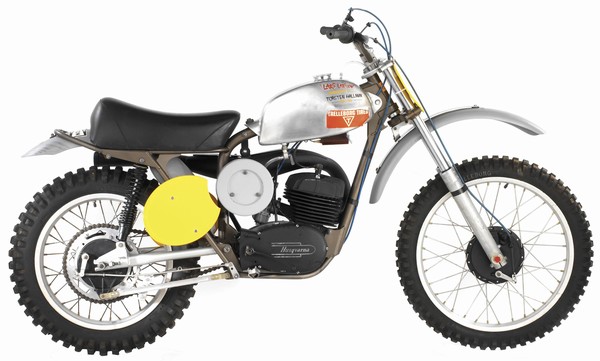Actually racing could do much to improve our bikes if racers and manufacturers were allowed to innovate.

If you have followed racing of all types down through the years you probably recognize the name Smokey Yunick. He was known for making improvements in engine and chassis design that netted him more power better fuel mileage better handling etc. Smokey never did anything that was actually against the rules, he simply did all kinds of things the rulebook didn’t prohibit to give his cars a racing edge. In other words, he was a champion of innovation.
Do you think he was applauded for his design improvements? Actually far from it! Race organizers and sanctioning bodies go out of their way to enforce the status quo and consider improvements cheating.
So yes, racing could improve our bikes if improvements were allowed to happen.
Following are major breakthroughs in motorcycle design in recent years that were squelched by the sanctioning bodies. The first breakthrough happened in the US and was squelched by the AMA, the American Motorcycle Association. The second breakthrough happened in Japan and was squelched by the FIM, the Federation International Motorcyclist. The third one was shelved because the second one was squelched.
1 – In 1971 Lars Larson raced a titanium framed Husqvarna 400cc motocross bike and he won the championship that year. Using titanium for the frame, axles, and a few other components, Lars got the weight down to 189 pounds. That was a savings of 25 pounds from stock. We all know the lighter a bike is the easier it is to handle, and the better fuel mileage it gets.
The AMA outlawed titanium frames for competition the next season. If they had kept out of it, all the other companies would have had to go titanium also to remain competitive and we would be the winners. No matter what your dirt bike weighs now it would be about 25 pounds lighter and somewhat stronger if the AMA had not made that shortsighted move. These actions are always taken to try to do the impossible – – keep down the cost of racing.
If the innovators are not allowed to do something simple like that which would’ve benefited all of us, they’ll just have to do several sneaky things that benefit no one but them and probably raise the cost of racing even more.
2 – In 1980 Honda made an effort to revolutionize motocross by designing a 125 two cylinder two stroke motocross bike that put out 35 hp. at 13,000 RPM however the FIM sanctioning body banned two cylinder bikes from motocross competition in 1981.
Because of that we still only have single cylinder motocross bikes, rather than the much better performing twin cylinder bikes that the industry is capable of providing.
3 – In 1980 Honda was also pioneering a revolutionary leading link fork that got stiffer the further it moved into its travel, leading to vastly improved control on a motocross course or any other unimproved riding area. Since their twin cylinder motocross bike was rejected by the sanctioning body they simply shelved their whole design effort.
The manufacturers don’t like a ban on innovation either, because if designers and engineers lack a challenge the entire line of products suffers.
In affect the FIM effort to protect the status quo has deprived us of motorcycles that are a lot safer and more fun to ride.
So let’s encourage the motorcycle manufacturers to ignore the race sanctioning organizations and build better lighter more fun motorcycles for us to enjoy. We all know from past experience that if someone wants to race anything an organization will start up which encourages that form of racing, so the sanctioning body’s rules are simply a paper tiger.
Cost-cutting rules about racing have never kept the cost down yet, so I don’t suppose we will actually ever see that happen anyway.
In racing, there should always be a manufacturer’s class where innovation is encouraged so they can actually improve our bikes.
There should also be a more or less stock class where individuals can innovate to improve our current crop of machines.
Spec classes should also be run where all the bikes are kept on a par for that so-called affordable racing we keep hearing about.
So which manufacturer is going to do titanium frames, modern front suspension and make the lightweight bikes that have been possible since 1971? They should be even easier to do now with 45 years more accumulated experience using titanium in aerospace production and so forth.
Perhaps manufacturers should make both the plain-vanilla models that satisfy sanctioning bodies, and the up to date models most of us really want to buy.
Herb Uhl
